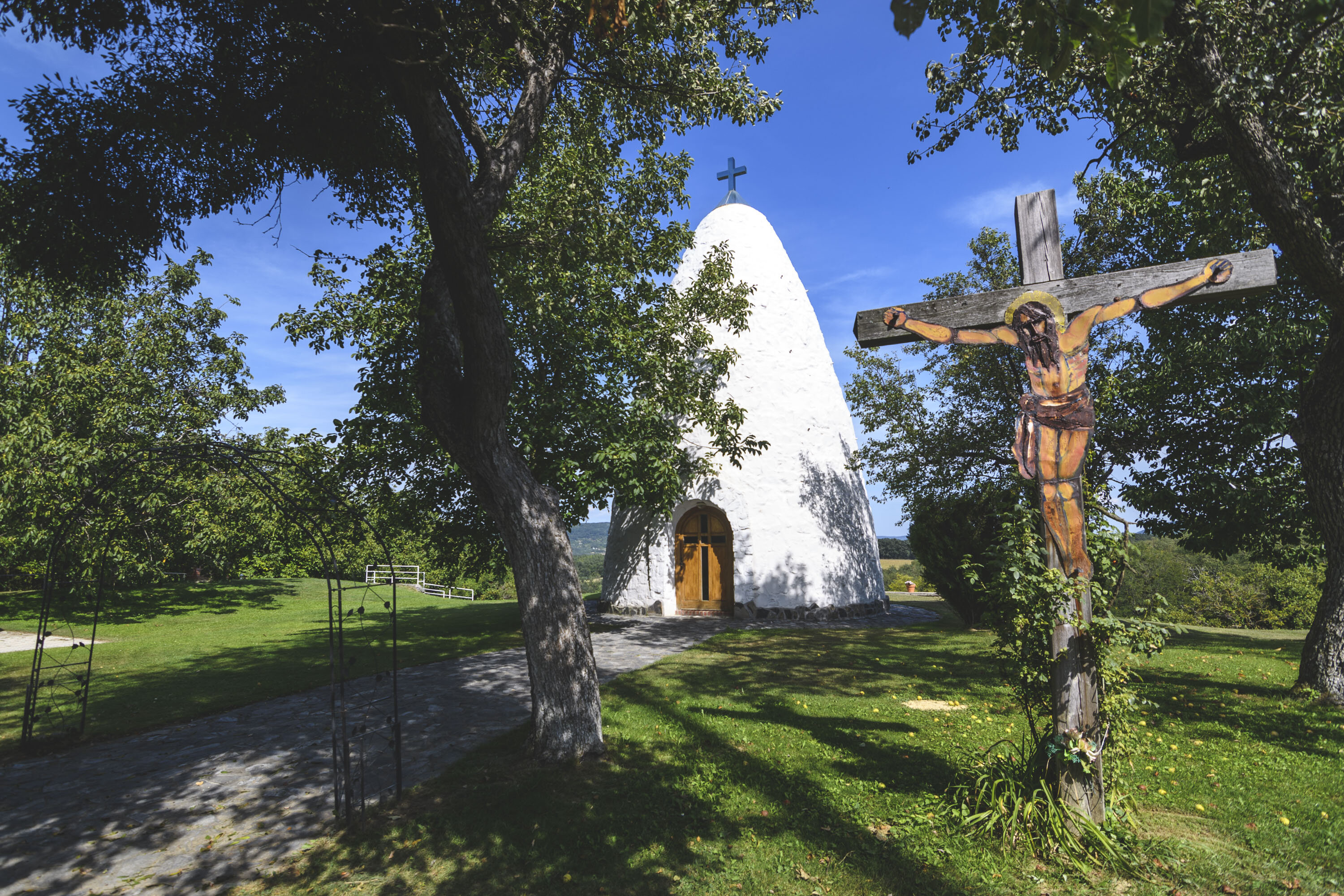Most people simply pass through villages like these or only end up here by accident. These hidden hamlets usually don’t leave a lasting impression on those who ride through them. Here we round up five whose unique features make them worth more than just a whistle stop.
Halimba

Tucked away in the southern parts of Bakony, this small village of 1,200 residents was last busy during the age of bauxite mining: people used to come here from the neighboring towns to shop at the local clothes store, while the hardware shop even sold Pannónia motorcycles. Things have changed since then and the only reminder of the bauxite days is the local museum and a few industrial buildings. The Herbal Study Garden provides herbs and vegetables for the kindergarten, while it also houses an impressive insect hotel, a safe and warm place whose tiles collect the heat of the sun during the day.
Sénye

This village is best known for its oven-shaped chapel, set atop a hill with a stupendous view. From here, the world unfolds beyond the local vineyards: the Buddhist stupa of Zalaszántó, the castle of Rezi and the vivid green of Zala County’s hills are all in sight. The population is about the size of an average class in Hungarian schools (31 pupils) and everyone knows everyone. Near Sénye, the Zala River flows into Balaton. You can take a boat and quietly row to the lake in the extraordinary company of cormorants.
Balatonhenye

The road to Balatonhenye does not lead out of it, you have to go back the way you came. You are, however, right next to Köveskál, from where Lake Balaton, Hegyestű and the entire Káli-medence are visible from the hillside. The tiny village is idyllic: carefully renovated farmhouses stand by a little creek that runs happily under the shades of vividly green trees. Two pretty gardens supply local restaurants, and lovely guesthouse A Nyaraló. In winter, the whole village gathers for pig slaughters, while every summer the community organizes the annual village celebration. It even has its own pétanque team.
Kallósd

A dachshund lies on the warm pavement, keeping an eye on the rooster that’s keeping an eye on the hens. The main street of Kallósd is filled with characters from animal fables who are way too peaceful to be bothered by passers-by. What could disturb such a lovely place? There’s a key in a box on Kossuth utca that opens the door of the whitewashed, Árpád-era round church on the top of the hill. Located ten kilometers from Zalaszentgrót, this village is justifiably proud of its ecclesiastical landmark as there aren’t many of them left. The village depopulated after the Turkish invasion in the 17th century. According to legend, the church, protected by the forest, was rediscovered in 1735, when a stray animal led locals back to it.
Vindornyalak

Vindornyalak is only a few kilometers from Zalaszántó, and its Buddhist place of meditation, or stupa. The village itself has two important sights: one is the Baroque Hertelendy Château, built in 1780 on the hill by Vindornya-patak and currently functioning as a community space, lodging and wine museum in one. Alongside, the white church is the other landmark, its walls decorated with fabulous murals, its garden filled with apple trees heavy with fruit. Fight your way through the nettles to explore all this further.




